Mini Transat: The course to Cape Verde
Published on November 4th, 2017
(November 4, 2017; Day 3) – As the Mini-Transat la Boulangère fleet sailed south along the African continent, Ian Lipinski (Griffon.fr) is set to enter the channel between the islands of Santo Antao and Sao Vicente in the early hours of tomorrow if he manages to keep up the current pace.
In his wake, twenty or so competitors may well follow suit through the Cape Verde archipelago over the course of the day. The solo sailors who’ve declared their intention to make a pit-stop in Mindelo aren’t likely to make landfall before Monday, November 6.
After three days of racing, Ian Lipinski already boasts a lead of 45 miles over Simon Koster (Eight Cube Sersa) and 67 over Jörg Riechers (Lilienthal). The minute conditions toughen up a bit, the Raison design and her skipper are proving to be untouchable. Indeed, racers often say that speed makes you intelligent and Ian Lipinski’s trajectory seems to back this up.
Featuring a clear-cut choice of options without being overly radical and a sound sequence of trajectories, there isn’t much to be faulted. Another lesson learned from this race start is that the future seems to belong to the ‘scow bows’ as the first pointy-nosed boat, that of Romain Bolzinger (Spicee.com), is a way off the race for the podium, despite adopting an easterly trajectory along the coast of Africa.
In the production boat category, the Pogo 3s hold the lion’s share. Tanguy Bouroullec (Kerhis – Cerfrance) is continuing to lead the way ahead of Erwan Le Draoulec (Emile Henry) and Clarisse Crémer (TBS). In fact, the latter sailor from Lorient isn’t the only female sailor to be pulling her way up through the ranks.
In the prototype category, Charlotte Méry (Optigestion – Femmes de Bretagne) has moved up into fifth place, notably thanks to a series of well negotiated tacks along the coast of Africa, coupled with excellent speed. Evidence then that the Mini-Transat La Boulangère is a competition where men and women can battle it out on an equal footing. The solid performance by Camille Taque (Foxsea Lady), eleventh in the prototypes, as well as the combined attack from Nolwen Cazé (Fée Rêvée), Estelle Greck (Starfish) and Elodie Pédron (Manu Poki et les Biotechs), all in the top third of the race, comes as further proof.
All that’s missing is a female victory in the Mini-Transat, though in their time Isabelle Joschke (winner of the first leg in 2007) and Justine Mettraux (second production boat in 2013) came achingly close.
It has already been noted that a number of solo sailors have made the decision to make a pit-stop in Mindelo to effect repairs. Arthur Léopold-Léger (Antal XPO) and Thibault Michelin (Eva Luna) have no other solution given the state of their transoms. For others, the victims of less serious damage, the decision is less of a duty: should you risk making a transatlantic crossing with a boat you know isn’t running at her full capacity, or make a pit-stop in the knowledge that the minimum 12 hours imposed by the rule will inevitably take longer, between the time necessary for repairs and the detour as far as Mindelo.
Among the second half of the fleet, it’s hard to know if the speeds observed are due to lighter winds or a technical issue kept under wraps. This is the thinking behind the performances by Rémi Aubrun (Alternative Sailing – Constructions du Belon), Antoine Cornic (Destination île de Ré) and also Thomas Béchaux (Poralu Marine). The passage via the Cape Verde islands makes the lure of a pit-stop all the more tempting of course and it may well prove to be the biggest trap of this second leg.
Position report on 4 November at 15:00 UTC
Prototypes
1 Ian Lipinski (Griffon.fr) 2,207.9 miles from the finish
2 Simon Koster (Eight Cube Sersa) 45.3 miles behind the leader
3 Jorg Riechers (Lilienthal) 67.7 miles behind the leader
4 Romain Bolzinger (Spicee.com) 76.7 miles behind the leader
5 Charlotte Méry (Optigestion – Femmes de Bretagne) 77.6 miles behind the leader
Production boats
1 Tanguy Bouroullec (Kerhis – Cerfrance) 2,275.3 miles from the finish
2 Erwan Le Draoulec (Emile Henry) 14.7 miles behind the leader
3 Clarisse Crémer (TBS) 21.8 miles behind the leader
4 Pierre Chedeville (Blue Orange Games – Faire Retails) 41.3 miles behind the leader
5 Benoît Sineau (Cachaça 2) 56.8 miles behind the leader
Class news – Race news – Tracking – Facebook
Race Facts
· 21st edition
· 4,050 miles to cover between La Rochelle – Las Palmas in Gran Canaria and Le Marin (Martinique)
· 81 skippers at the start
· 10 women
· 11 nationalities
· 20 years: age of the youngest skipper in the race: Erwan Le Draoulec
· 62 years: age of the oldest skipper in the race: Fred Guérin
· 25 prototypes
· 56 production boats
· 66 rookies
· 15 ‘repeat offenders’
Background
With an overall length of 6.50m and a sail area pushed to the extreme at times, the Mini Class offers incredibly seaworthy boats. Subjected to rather draconian righting tests and equipped with reserve buoyancy making them unsinkable, the boats are capable of posting amazing performances in downwind conditions… most often to the detriment of comfort, which is rudimentary to say the least.
The Mini Transat has two legs to carry the fleet from La Rochelle, France to Martinique, West Indies. The leg from La Rochelle to Las Palmas de Gran Canaria is a perfect introduction to proceedings before taking the big transatlantic leap.
The first leg starts on October 1, with the fleet thrust into the Bay of Biscay which can be tricky to negotiate in autumn, while the dreaded rounding of Cape Finisterre on the north-west tip of Spain marks a kind of prequel to the descent along the coast of Portugal. Statistically, this section involves downwind conditions, often coloured by strong winds and heavy seas. Making landfall in the Canaries requires finesse and highly developed strategic know-how.
The second leg begins on November 1, with the solo sailors most often carried along by the trade wind in what tends to be a little over two weeks at sea on average. Due to a storm, the fleet is being routed south to Cape Verde before heading west. At this point, there’s no way out: en route to the West Indies, there are no ports of call. The sailors have to rely entirely upon themselves to make Martinique.
Source: Aurélie BARGAT | Effets Mer


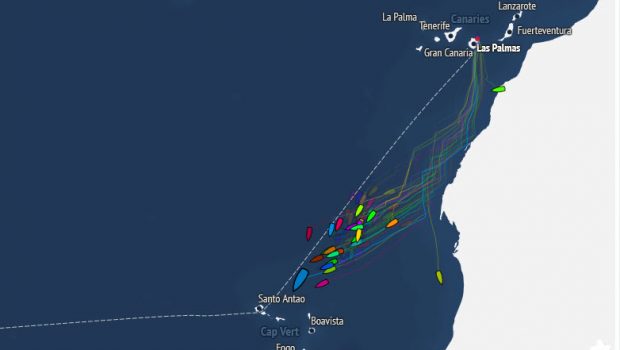

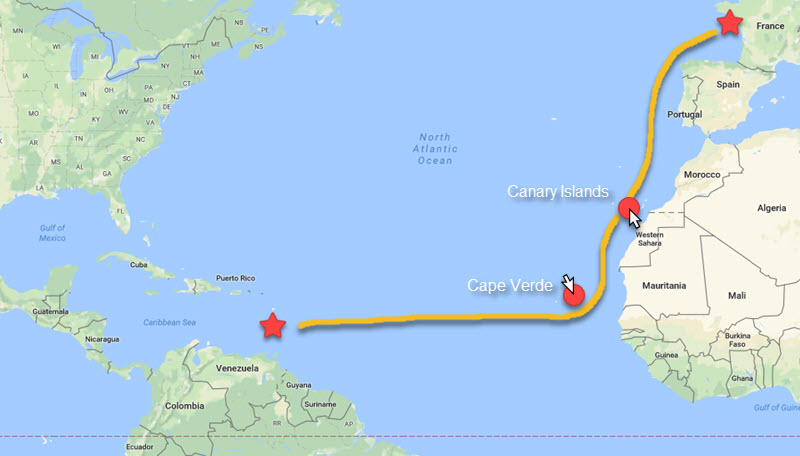


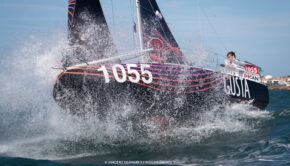
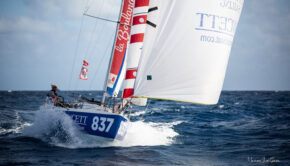
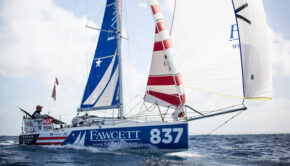
 We’ll keep your information safe.
We’ll keep your information safe.